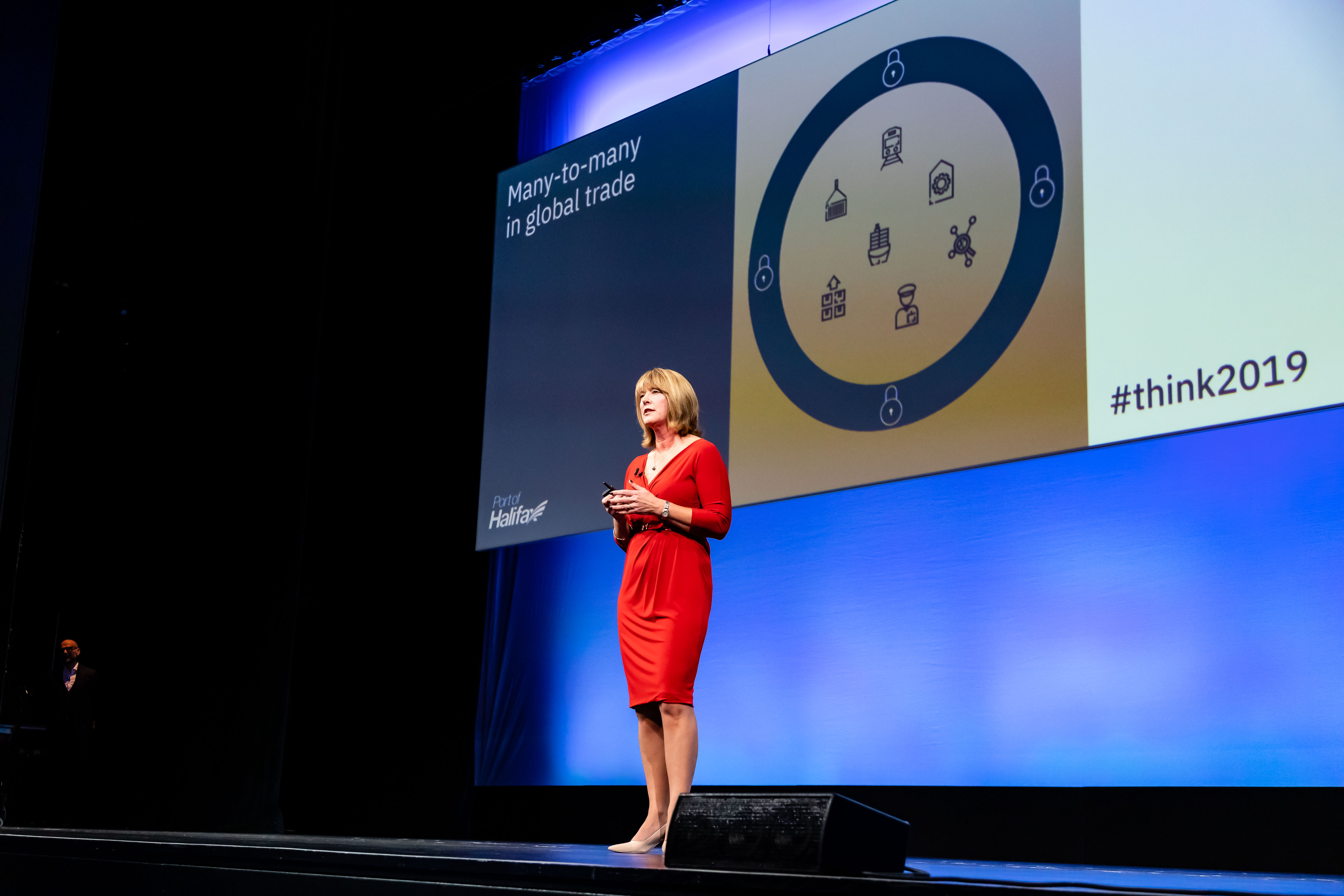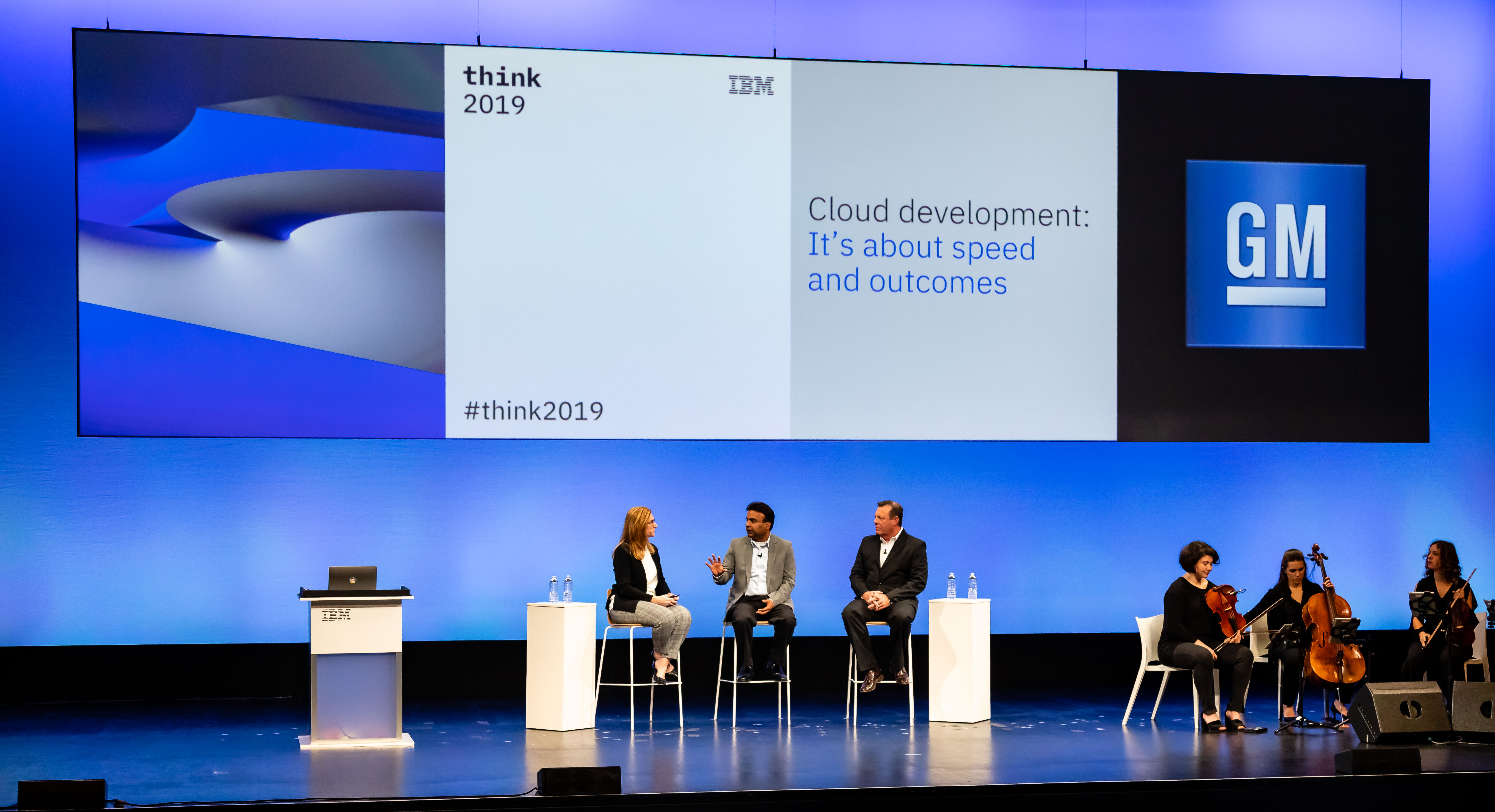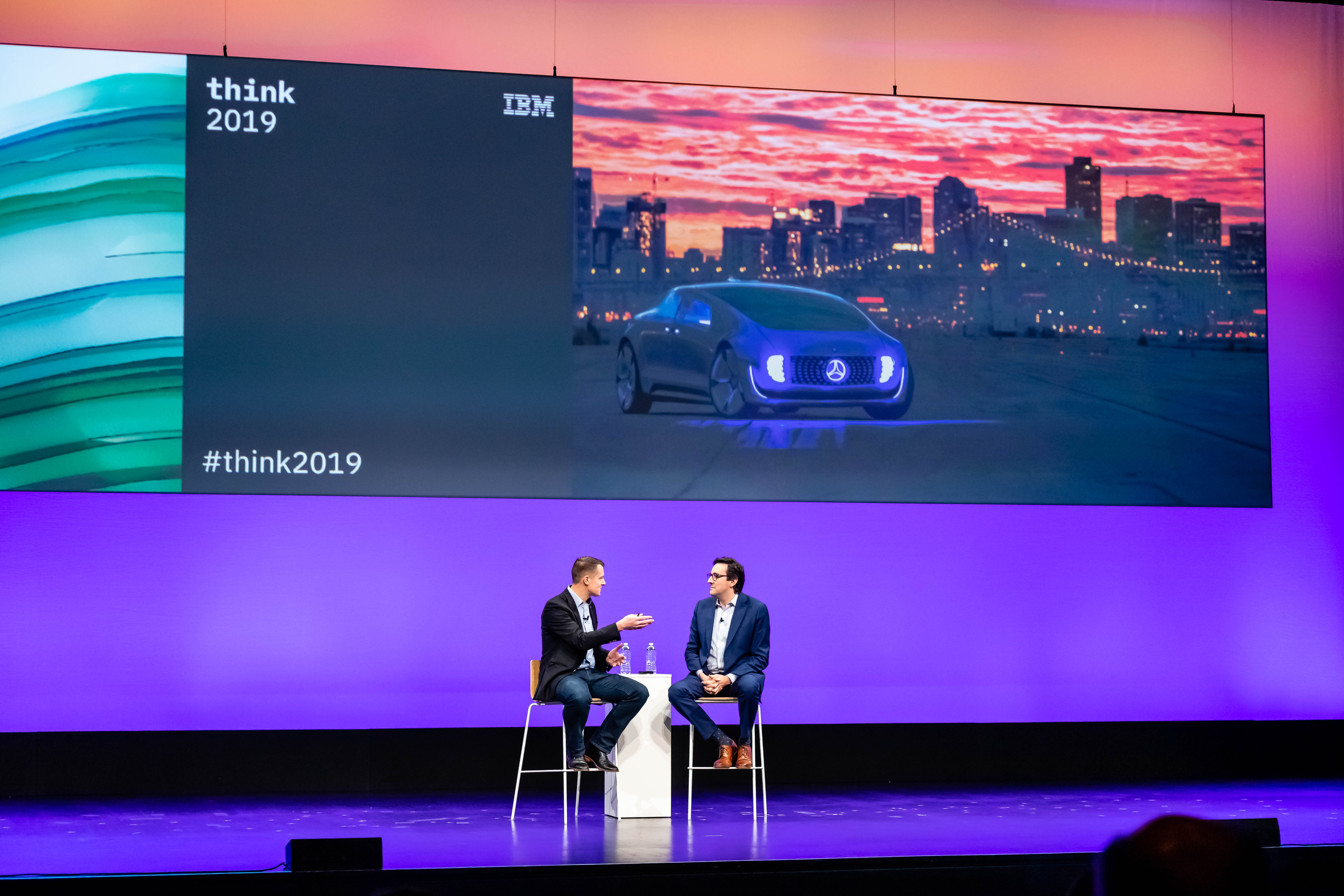THINK Spotlight
Think Day 1: Advancing Blockchain, Multicloud, Quantum, Security
The pace of change—and innovation—was a dominant theme on the first day of Think 2019 in San Francisco as business and technology executives came together to share ideas and strategies on how to take advantage of new and emerging technologies. Following is a recap of discussion from four key sessions that reflect the wide range of technologies and issues being shared with and talked about by thousands of conference attendees.
Blockchain as a system of trust: real-world cases
What makes blockchain special? That’s the question that Marie Wieck, General Manager, IBM Blockchain, asked to kick off the session “Digitizing the Flow of Goods, Information and Money with Blockchain.” Blockchain is about “creating shared sources of truth,” Wieck explained. That includes “creating trust and transparency in the data that’s shared on the Internet.”
But, just like the Internet yesterday and AI today, blockchain also needs rules of the road. Wieck outlined three:
- Blockchain should be open (not just open source, but also open governance).
- Blockchain should be controlled by no single entity.
- Blockchain should strive toward building networks of networks.
“There’s a lot of myths around blockchain,” Wieck noted. One way of doing away with those myths is to look at real-world cases, and that's what the presentation about.
Natalie Dyenson, VP of Food Safety & Quality, Dole Food Company, was one of three guest speakers. Dyenson discussed how blockchain helped reduce risk in complex, global food supply chains. “Having fresh produce year-round is made possible by the globalization of the food supply chain,” Wieck added. “While this is great for the consumer, it has also added complexity for suppliers.”
By joining the IBM Food Trust, Dole is better able manage the interactions in its food supply chain and potentially trace and mitigate foodborne illness, said Dyenson. Equipped with a system of trust that tracks the provenance of foods, Dole can more quickly trace where food-safety related problems arise. That’s important because the FDA is able to trace only 10% of contaminated lots, according to Dyenson.
Managing multiple clouds: a new business imperative
Hybrid, multicloud environments have become a fact of life for many organizations. More than 70% of companies use up to 15 clouds—a mix of public and private clouds and on-premises IT, often from multiple vendors. A session titled “Managing the Hybrid Multicloud World for Digital Transformation” explored what companies are doing to make the most of this challenge. (Watch a replay of the session here.)
Robert Erickson, Director of Offerings, IBM Hybrid Cloud Management System, discussed how this new cloud reality brings additional complexity that enterprises are only beginning to grapple with. The traditional, centralized, IT operating model is quickly becoming obsolete in today’s hybrid, multicloud world, he said. The vast majority of companies lack the tools and services they need to operate in a multicloud environment. The numbers Erickson provided tell the story: 63% lack the skills needed, 42% have inflexible processes, 77% use outdated technologies.
Arun Sharma, an IT leader with General Motors, discussed GM’s challenges in running thousands of apps across dozens of cloud environments. He stressed the importance of “having tools to bridge multiple clouds and data centers.”
The presentation included a demo of IBM Multicloud Manager by Robin Hernandez, Director, IBM Private Cloud Offering Management. Launched last year, IBM Multicloud Manager is an open technology designed to make it easier to manage, move and integrate apps across different cloud infrastructures.
How Quantum will transform computing
In “Access The Future: Quantum Computing, ” Director of IBM Research Dario Gil described how quantum computing systems can enable leaps in computing power over classical bit-based information processing. (Watch a replay of the session here.)
“We believe that quantum is not only going to change the way we think about and perform computing, but it will fundamentally change the way we look at the world,” Gil said.
His 40-minute overview started with a short film that highlighted the vast potential of the quantum approach, which leverages different physical phenomena — superposition, entanglement and interference — to manipulate information at an incredibly rapid rate. While a traditional computer uses long strings of bits that encode zeros and ones, quantum bits, or qubits, can take on the value 0 or 1, or both simultaneously.
Quantum computing promises to have great value in compute-intensive fields like chemistry, materials science, drug discovery, machine learning and risk analysis, said Gil. Today, IBM quantum systems can be accessed through the IBM Cloud via the IBM Q Experience. Tens of thousands of people are running experiments to conduct research and tackle new problems.
Ben Boeser, Director of Open Innovation at Mercedes-Benz Research & Development North America, explained that the car maker is using quantum computing to dream up and build new models of cars, including both autonomous and electric vehicles. Quantum will be used in materials research “and will have a big influence on our future product line,” he said.
IBM is going full throttle in its support of quantum, Gil noted, offering both Qiskit, an open source platform for programming quantum computers and supporting the IBM Q Network, a community of organizations working to advance the understanding and use of quantum.
Rearview mirror: Danica Patrick discusses security
“Innovation Doesn’t Happen Without Security. And Security Needs Innovation” featured a broad view of security in its many forms. The session began with former race car driver Danica Patrick describing how the safety features in high-performance cars and high-speed racing — things like safety barriers and in-cockpit safety harnesses — encouraged her to push her limits, but also be safe. (Watch a replay of the session here.)
“Recognize what it is about you that’s different, whether it’s what you do or the way you think,” she said. “Then embrace those. Being different allows you to create great things.”
Mary O’Brien, General Manager of IBM Security, said companies need to innovate to stay ahead, yet that doesn’t work without security. You may not be building race cars, but there can be risk in embracing disruptive technologies and too often, “we see clients who are loaded down with the security problem du jour,” O’Brien noted.
One way to improve security is to reject complexity and encourage collaboration. She pointed to IBM Security Connect, an open, cloud-based platform that enables users to gather security data from across existing tools and products.
O’Brien was joined on-stage by Andy Powell, Chief Information Security Officer at Maersk, and Kevin Baker, Chief Information Security Officer at Westfield Insurance. While Baker discussed the delicate act of balancing regulatory compliance with security needs, Powell recalled the June 2017 cyberattack attack that affected Maersk and other companies and snarled shipping terminal operations worldwide, briefly shutting down the Port of Los Angeles' largest cargo terminal.
Recovering from the attack was as important as making sure the next one won’t happen. “You need to have a balance of preventive measures and recovery measures,” Powell said. “You’ve got to accept that fact that some attacks will get through.”
Cybersecurity is everyone’s responsibility. “Everyone has a role to play in both prevention and recovery,” Powell said. “The perception of security is that we like to simply stop things. But we’ve got to be agile too.”


